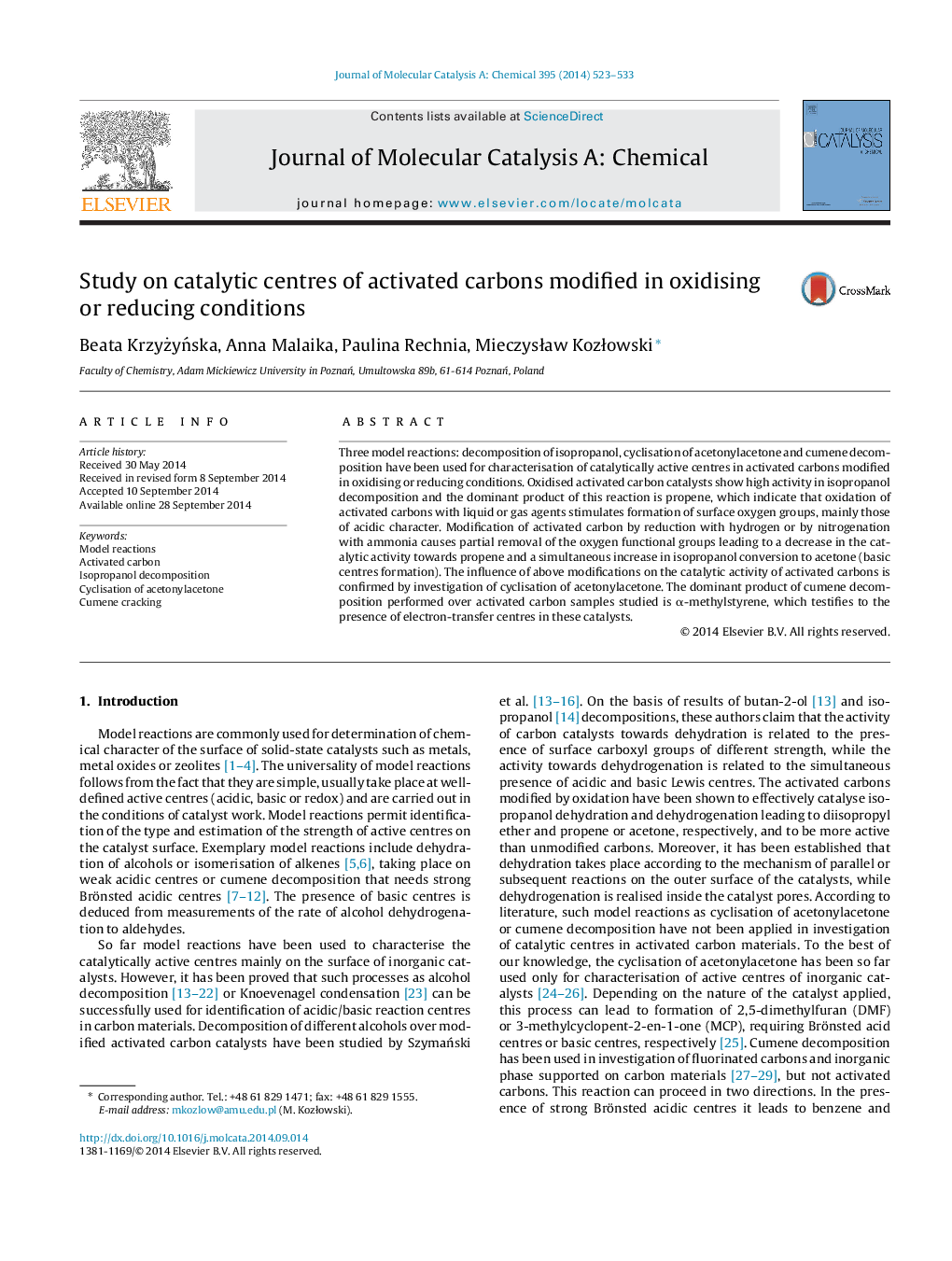| Article ID | Journal | Published Year | Pages | File Type |
|---|---|---|---|---|
| 65354 | Journal of Molecular Catalysis A: Chemical | 2014 | 11 Pages |
•Activated carbons from pinewood sawdust and brown coal precursors were prepared.•Samples obtained were modified in oxidising or reducing conditions.•Three model reactions were used for characterisation of active centres in carbons.•Carbons changed in reducing or oxidising conditions show new basic or acidic sites.•In all samples obtained electron-transfer centres dominate over strong acidic ones.
Three model reactions: decomposition of isopropanol, cyclisation of acetonylacetone and cumene decomposition have been used for characterisation of catalytically active centres in activated carbons modified in oxidising or reducing conditions. Oxidised activated carbon catalysts show high activity in isopropanol decomposition and the dominant product of this reaction is propene, which indicate that oxidation of activated carbons with liquid or gas agents stimulates formation of surface oxygen groups, mainly those of acidic character. Modification of activated carbon by reduction with hydrogen or by nitrogenation with ammonia causes partial removal of the oxygen functional groups leading to a decrease in the catalytic activity towards propene and a simultaneous increase in isopropanol conversion to acetone (basic centres formation). The influence of above modifications on the catalytic activity of activated carbons is confirmed by investigation of cyclisation of acetonylacetone. The dominant product of cumene decomposition performed over activated carbon samples studied is α-methylstyrene, which testifies to the presence of electron-transfer centres in these catalysts.
Graphical abstractFigure optionsDownload full-size imageDownload high-quality image (146 K)Download as PowerPoint slide
